It is known to all that SFP and SFP+ are commonly used for 1G and 10G network, while QSFP is normally used for 40G network. The interface changes need different connectors to achieve network connectivity. To support 40G network, what cabling infrastructure is feasible? This article will discuss the cabling options for 40G data center.
The IEEE 802.3ba standard specifies MPO (multifiber push-on) connectors for standard-length multimode fiber connectivity. MTP/MPO is the designated interface for multimode 40G. With small, high-density form factor, it is ideal with higher-speed Ethernet equipment. A 12-fiber MPO connector interface can accommodate 40G, which is usually used in 40G data center. The typical implementations of MPO plug-and-play systems split a 12-fiber trunk into six channels that run up to 10 Gigabit Ethernet (depending on the length of the cable). 40G system uses 12-fiber trunk to create a Tx/Rx link, dedicating 4 fibers for 10G each of upstream transmit, and 4 fibers for 10G each of downstream receive. The upgrade path for this type of system entails simply replacing the cassette with an MPO-to-MPO adapter module.
Besides the MTP/MPO trunk or patch cord assemblies that interconnect QSFP+ transceivers, 40G direct attach cables are also used in the data center. DAC is a form of high speed cable with “transceivers” on both ends used to connect with switches to routers or servers. Is is a kind of optical transceiver assembly. Direct attach cables are not real optics and their components are without optical lasers. With lower cost and higher performance than the regular optics, direct attach cables are preferable for 40G data center applications and high-performance computing environments. Cost of connectivity is significantly reduced by avoiding the more costly fiber transceivers and optical cables. 40G DACs can provide inexpensive and reliable 40G speed connections using either active optical cables or copper cables.
An active optical cable consists of a bend-insensitive multimode or single-mode fiber cable terminated with a connector and embedded with transceivers that convert electrical signal to optical signal and back. Using the same interfaces as copper cables, AOC can reach a longer distance than copper cable, and is usually used in data center. Following table lists Fiberstore active optical cable solutions with features including high performance, low power consumption integrated cable for short-range multi-lane data communication and interconnect applications.
| 40G AOC Type | Image | Connector Type |
| 40G QSFP+ to QSFP+ AOC | 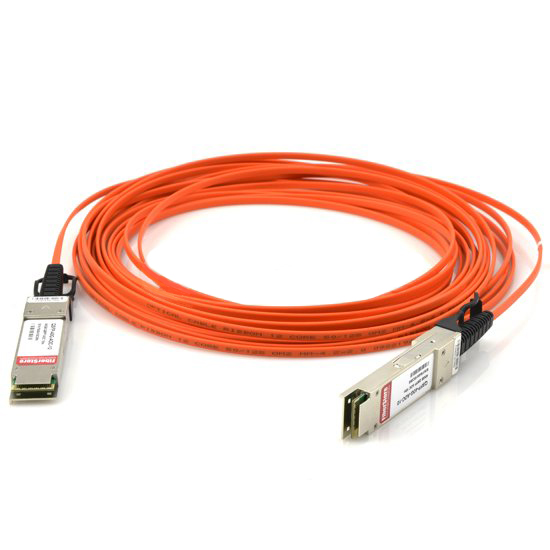 |
QSFP+ to QSFP+ |
| 40G QSFP+ to 4 SFP+ AOC | 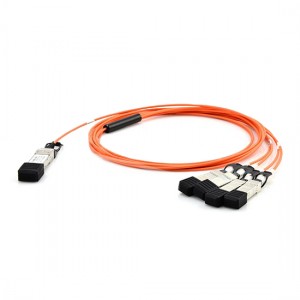 |
QSFP+ to 4 SFP+ |
| 40G QSFP+ to LC AOC | 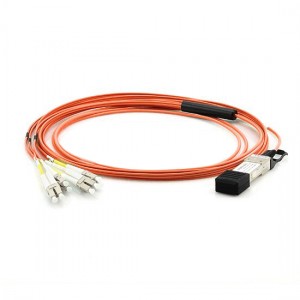 |
QSFP+ to LC |
Copper cables are specially designed for short-reaches in data center. They are less expensive than fiber cables. Today there are many twinaxial cables available to support 40G (10G x four channels), per 40GBASE-CR4 specification. The following table shows Fiberstore cost-effective copper cables providing much needed space for data centers.
| 40G Copper Cable Type | Image | Connector Type |
| 40G QSFP+ to QSFP+ DAC | 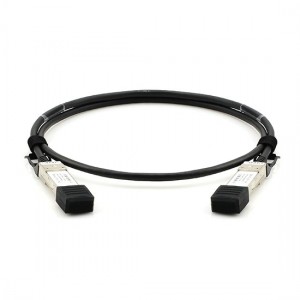 |
QSFP+ to QSFP+ |
| 40G QSFP+ to 4 SFP+ DAC | 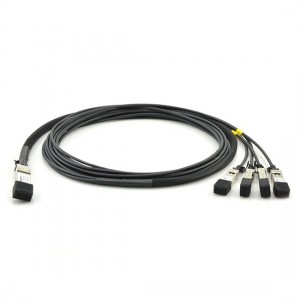 |
QSFP+ to 4 SFP+ |
| 40G QSFP+ to 4 XFP DAC | 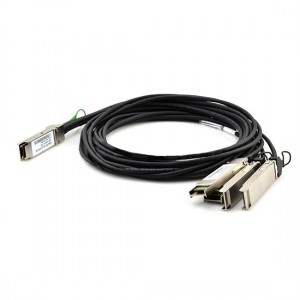 |
QSFP+ to 4 XFP |
MTP/MPO fiber cables and 40G QSFP+ cables are cost-effective options for 40G data center. Fiberstore provides all these cables with high quality and competitive price. Moreover, the direct attach cables are tested in practical applications to ensure the superior performance. For detailed information, please visit www.fs.com or contact sales@fs.com.